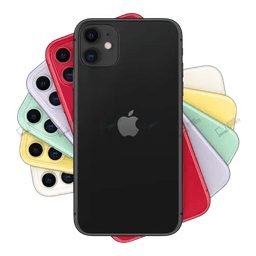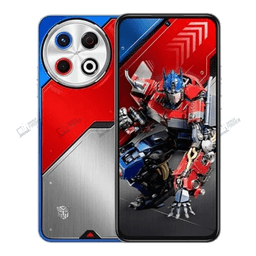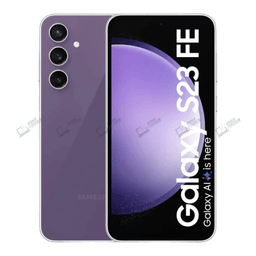
Nokia 2652 Foldable Launches After 1B Sales Milestone
In 2005, Nokia achieved a huge milestone by selling over 1 billion phones worldwide. To celebrate this success, Nokia introduced the Nokia 2652, a small foldable phone that was stylish, easy to use, and affordable. At the same time, other companies like Motorola and Samsung were also releasing their own foldable phones. Each of these phones had unique designs and features. In this article, we will look at the Nokia 2652 in detail and compare it to other phones from the same time.
Design and Build
The Nokia 2652 had a foldable “clamshell” design. When closed, it protected the screen and keypad, making it safer to carry in a pocket or bag. The phone was small, light, and easy to hold, weighing only 96.5 grams. It came in two colors: dark grey (“Cell”) and pearl white (“Fleur”). Both colors had shiny silver details, giving the phone a modern look.
Compared to the Motorola Razr V3, the Nokia 2652 was thicker and more basic, but still stylish. The Razr V3 became famous for its very thin design and metallic finish. On the other hand, the Samsung SGH-E700 had a sleek foldable design and was slightly more modern looking than the Nokia 2652.
Display and User Interface
The Nokia 2652 had a 128 x 128 pixel CSTN screen that could show 4,096 colors. While small, it was bright enough for reading messages, checking the menu, and using basic apps. The phone used Nokia’s Series 40 interface, which was simple and easy to navigate. Users could scroll in four directions and select options using two softkeys. It also allowed wallpapers and color themes for personalization.
In comparison, the Motorola Razr V3 had a 176 x 220 pixel TFT display, giving sharper images and clearer text. The Samsung SGH-E700 also had a better screen than the Nokia 2652, with 128 x 160 pixel TFT display that looked brighter and more colorful.
Calling, Messaging, and Internet
The Nokia 2652 supported dual-band GSM networks, which made it usable in many countries. It allowed voice calls, SMS messages, and MMS messages (pictures or short videos). It also had GPRS, which provided basic internet browsing, and supported Java apps and games. The Motorola Razr V3 and Samsung SGH-E700 had similar calling and messaging features. However, both also included a VGA camera, which the Nokia 2652 did not have. The Samsung phone also supported Bluetooth, making it easier to share files wirelessly.
Battery Life
The Nokia 2652 had a 760 mAh battery that provided long usage times. It could last up to 3.5 hours of talk time or 12 days on standby, which was impressive for a small phone. Users did not need to charge it often. Motorola and Samsung phones also had good battery life, but their larger screens and extra features like cameras and Bluetooth often used more power, making the Nokia 2652 slightly more reliable for long-term daily use.
Price and Market
When released, the Nokia 2652 cost around 100 euros, making it affordable for most people. It was sold in Europe, the Middle East, Africa, and China. Its price and simple design made it popular among students, young adults, and anyone looking for a reliable phone. The Motorola Razr V3 was much more expensive because it was a premium phone with a thin design and metal finish. The Samsung SGH-E700 was priced in the mid-range, offering more features than the Nokia but cheaper than the Motorola.
Why People Liked the Nokia 2652
The Nokia 2652 became popular for several reasons. Its small and lightweight design made it easy to carry. Its foldable style protected the screen and buttons. The phone was also simple to use, even for people who were new to mobile phones. And finally, its affordable price made it accessible to many users.
While the Motorola Razr V3 looked fancier and had a camera, it was more expensive. The Samsung SGH-E700 had more features like Bluetooth and expandable memory but also cost more than the Nokia. The 2652 focused on simplicity, reliability, and style at a low price, which made it stand out in its category.
Conclusion
The Nokia 2652 was a reliable and stylish foldable phone that served many people well. While other phones like the Motorola Razr V3 and Samsung SGH-E700 offered better screens and cameras, they were more expensive. The Nokia 2652 focused on being simple, affordable, and durable, which made it a popular choice in 2005. Even today, the Nokia 2652 is remembered as a classic phone that combined style, practicality, and ease of use. For people who wanted a reliable phone without extra features, the 2652 was the perfect choice.
FAQs: Nokia 2652
1. Does the Nokia 2652 have a camera?
No, it does not have a camera.
2. What colors are available?
Dark grey (“Cell”) and pearl white (“Fleur”).
3. Can it use the internet?
Yes, it can use GPRS for basic internet browsing.
4. Is it easy to use?
Yes, the Series 40 interface is very simple for beginners.
5. How long does the battery last?
Up to 3.5 hours of talk time or 12 days on standby.
6. How does it compare to Motorola Razr V3?
The Razr is thinner, has a better screen, and includes a camera, but it is more expensive.
7. How does it compare to Samsung SGH-E700?
The Samsung phone has a camera, Bluetooth, and expandable memory, but costs more than the Nokia 2652.
8. Can it work with modern networks?
It uses old 2G networks, so it may not work in all countries today.
9. Who would like this phone?
People who want a simple, small, and affordable phone.
10. Is it still available?
New units are not made anymore, but used phones may be found online.









